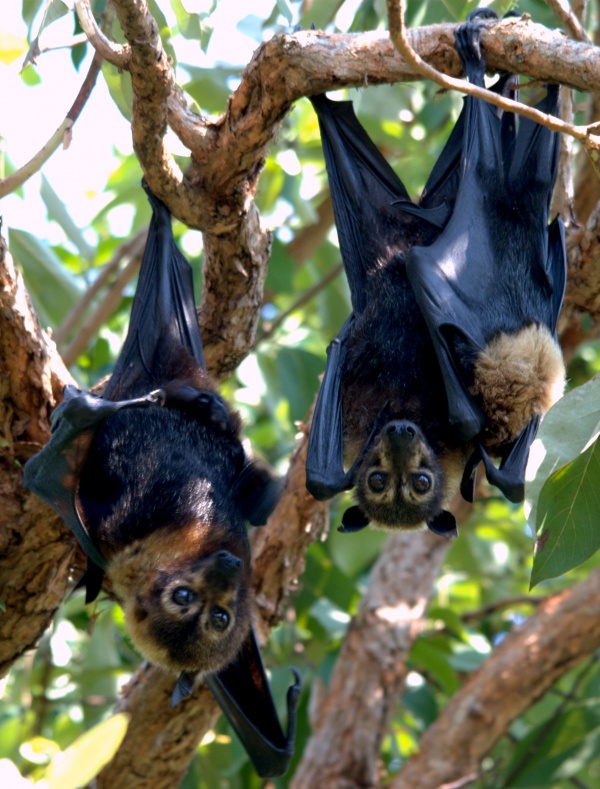Facts About Spectacled flying fox
The spectacled flying fox, also known as the spectacled fruit bat, is a captivating megabat native to northeastern Queensland in Australia, New Guinea, and various offshore islands. Sadly, this species has faced substantial challenges due to habitat loss, which has led to its listing as threatened under the Environment Protection and Biodiversity Conservation Act 1999.
These bats are named for their distinctive appearance: they have pale yellow fur around their eyes, and a mantle of pale yellow across their back, neck, and shoulders, sometimes extending to their face and head. They thrive in forest habitats, particularly rainforests, where they roost high up in the middle and upper canopy layers. Their diet is quite varied, consisting of rainforest fruits, flowers from riparian zones, and fruits from various tree species.
One intriguing behavior of the spectacled flying fox is its method of drinking, as it skims over water surfaces. However, this makes them vulnerable to predators like crocodiles. Despite being classified as "Least Concern" by the IUCN in 2008, their status was upgraded to "Endangered" by the Australian government in 2019. This change followed a severe heatwave that caused a massive population decline, with over 20,000 bats perishing.
The life cycle of these bats is equally interesting. Females typically give birth to one pup each year. The juveniles are nursed for over five months and are weaned before they start flying out with the colony at night. In the wild, spectacled flying foxes usually live between 12 to 15 years, but in captivity, they can live for more than 30 years. Their population faces various threats, including predation, tick infestations, and human-related dangers like getting caught in nets or power lines.
To help protect these bats, conservation efforts have been implemented. For instance, permits for limited culling to protect crops have been reintroduced. The species' endangered status was a direct response to the severe heatwaves that caused significant die-offs. This prompted the Humane Society International to advocate for the spectacled flying fox to be listed as endangered, underscoring the urgent need for continued conservation actions.
